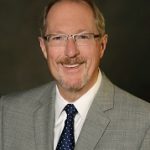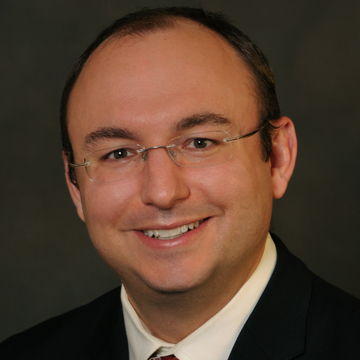Dan Loescher
 To fix his back problems, local Rockford accountant Dan Loescher had to refocus his attention from the pain in his lower back to his neck.
To fix his back problems, local Rockford accountant Dan Loescher had to refocus his attention from the pain in his lower back to his neck.
The journey that eventually landed him at Rockford Spine Center started about seven years ago. He had some back pain and consulted a neurologist, who did an MRI and suggested that if Loescher ever experienced numbness in both arms, he head straight to the emergency room. But there was no follow-up or referral to see a spine specialist.
Loescher, now 64, started suffering from neuropathy, which is nerve damage that causes tingling, numbness and pain, about five years ago. It started in his feet and then progressed to his hands and legs.
His back pain worsened to the point where he spent three days on the floor at home laying on his back to ease the pressure. Loescher finally got a referral to Rockford Spine Center in the fall of 2017. New X-rays were taken, and he remembers Dr. Christopher Sliva telling him, “I care about your back, but your neck is the problem.”
Two of Loescher’s vertebrae were pressing on his spinal cord, which was causing some of the symptoms in his back, arms and legs. He attributes the wear and tear to a serious car accident he was in as a teenager and a bad concussion in 2011.
“No one had ever shown me a picture or explained anything about my neck. I was somewhat in awe of what was being explained,” Loescher recalled. “I wasn’t sure if fixing the neck would have an impact on my legs, but they explained that this can impact the entire body.”
Dr. Sliva described Loescher’s situation as essentially a spinal cord injury that was “happening in slow motion,” resulting in symptoms of myelopathy rather than neuropathy.
“Rather than having an acute injury that results in spinal cord injury, myelopathy is typically a slower onset of symptoms that are occurring as a result of damage to the spinal cord,” Dr. Sliva explained. “Oftentimes, patients present with symptoms that are difficult to explain by their primary caregivers, but in some circumstances are attributable to spinal cord compression.”
Dr. Sliva performed an anterior cervical discectomy and fusion on the C5-C6 vertebrae in Loescher’s neck in February 2017. The disc between the vertebra was removed and replaced with cadaver bone, fused with a plate and four screws.
Loescher said he was impressed by the preparation for the procedure: He was given a folder with instructions, which included stretching his Adam’s apple because the surgery entry point would be through the front of the neck. He also started taking a vitamin D supplement to help with bone density and healing.
“For patients who receive care with us, we spend a great deal of time with each caregiver reviewing the rationale for surgery and what to expect at surgery, as well as the recovery process,” Dr. Sliva noted. “In surgeries that involve the spine, the actual surgical procedure itself is only a portion of what allows patients to have a good outcome.
When he awoke from surgery, Loescher said the numbness in his fingers was gone. He was home the same day and went back to work after a week.
He had to wear a neck collar for six weeks, which made the return to work a bit more difficult because his movement was restricted. But as a certified public accountant (CPA), he was entering the busyness of tax season.
“Postoperative instructions and protocols that we have developed due to our extensive experience in treating patients aid in the recovery because there are certain activities that oftentimes need to be restricted for a period of time after surgery,” Dr. Sliva said. “While in many cases these are short-term restrictions, they are critical to allowing the spine to heal after a surgical procedure.”
Loescher did a short stint in physical therapy to rebuild the strength in his neck. The surgery allowed for some relief from the numbness and pain in his feet and legs, too. He still has some back pain, but it’s not as severe, caused by a bulging disc around his lower back and hip. Loescher did more physical therapy for his back and continues to exercise and stretch regularly to strengthen his core rather than pursue surgery at this time, as Dr. Sliva has recommended.
Dr. Sliva’s team, which includes physician assistant Brad Wolf and nurse Megan Liszka, was very direct and clear with answering Loescher’s questions, he said. “It wasn’t directive – it was interactive. You had a sense that this is what needed to be done.”
It was Liszka who suggested the X-ray of Loescher’s neck, after he told her about the tingling in his fingers. He’s still amazed at how long he was dealing with the symptoms and ultimately what ended up being the root of his issues.
“Clearly, the surgery was the right decision,” he said. “Had it not been brought to my attention, I was in danger of bad things happening.”


